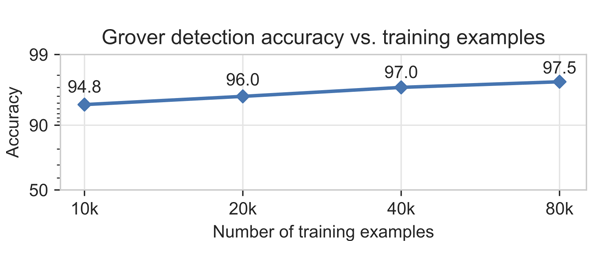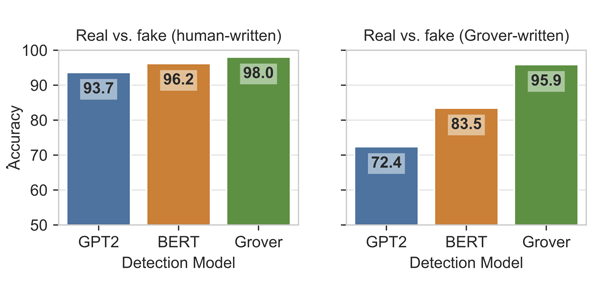
With people having the ability to post just about anything on the internet, the web has become plagued with fake news.
Just when tech companies started using AIs to curb the spread of fake news, people started to also use AI to create even more convincing fake news.
Take deepfakes for example, which have took adult websites and the internet by storm by putting celebrities' face into some adult performers' body.
And just when people started to know how to differentiate these fakeries from legitimate contents, tech has advanced to be capable of creating even a lot more convincing fakes.
The race won't be over, as researchers are continuously improvising their ways to develop AI, to see what is their limit, which surprised them each time they pass a milestone.
And when fake imageries and footages aren't enough, AIs have become sophisticated enough as they can too, create fake text contents.
As previously demonstrated by 'GPT-2', OpenAI's as its creator showed how scarily convincing the AI can be when generating fake text contents. The AI which was developed using large-scale unsupervised language model gave it the ability to generate coherent paragraphs of text, achieves state-of-the-art performance on many language modeling benchmarks.
This time, there is another contender in this fakery field.
The Allen Institute for Artificial Intelligence has created an AI it calls 'Grover' which does the same thing, but in the style of actual human journalist. And the researchers are trying to make this fake news generator as a mean to help people better detect fake news.
According to the institute:

Most fake news is generated by humans, and then are spread on social media. But with AI fake news generator, like the controversial GPT-2, the future is pointing out that AI-generated contents are starting to get a bigger role in the fakery field, as they are becoming increasingly better. In some cases, they can even be better than the real thing.
The concern is that, it's getting much easier for people to obfuscate facts with their own opinions, by creating fake contents to appeal the masses.
While it’s quite easy for anyone to check whether an article is legitimate, like by looking at the source and doing some quick reverse search on search engines. But frankly, not everyone wants to be bothered doing this. If a news go viral for whatever reason, false or not, people will be convinced.
Read: The Complicated Fake News, And The Things You Can Do Stop Them
In worse case scenario, fake news are usually made to be so convincing, and using clickbait, they can go viral surpassing the popularity of the legitimate truth.
In the case of Grover, the institute has created a website at https://grover.allenai.org/ to showcase its prowess. Initially launched as a demo, the site allows users to input a domain name, the date the author, the headline, and a field to fill in some article pieces.
By hitting the 'Generate' button, the AI goes to work, and creates a convincing fake article based from the inputs. Users can keep hitting that 'Generate' button and see Grover continue creating another and another fake news.
And to check whether an article was written by a real human or Grover, users can go straight to the 'Detect' tab to fill in the input field with article text, and click ‘Detect Fake News.’

What’s terrifying about this AI is that, it's extremely simple to use. Practically, anyone can create convincing and intelligible but fake material with just a few inputs. With Grover, fake news creation is just as easy as doing some copy-paste and typing.
It should be unsettling to see how far AIs have progressed, thanks to the massive amount of information the web has to give, and the huge trove of information people are generating. Fortunately, Grover isn't created to propagate fake news, and instead is meant to identify and dispute it.
According to its creators on their publication, Grover can detect if an article was written by an AI (including itself) with 92-percent accuracy.
"Note that, even if Grover fails to detect a given piece as fake, our findings suggest that releasing many such articles taken together would be relatively easy to spot," explained the Grover website. "Thus, if a source of Neural Fake News disseminates a large number of articles, Grover will be increasingly capable of spotting these articles as malicious."
This kind of prowess should be a huge help for people in academia, journalism, government, and tech companies. With this kind of AI, they can be better equipped when trying to shed light to the buried truth.
Further reading: Fake Information On The Internet. It All Goes Down To How We Perceive Them